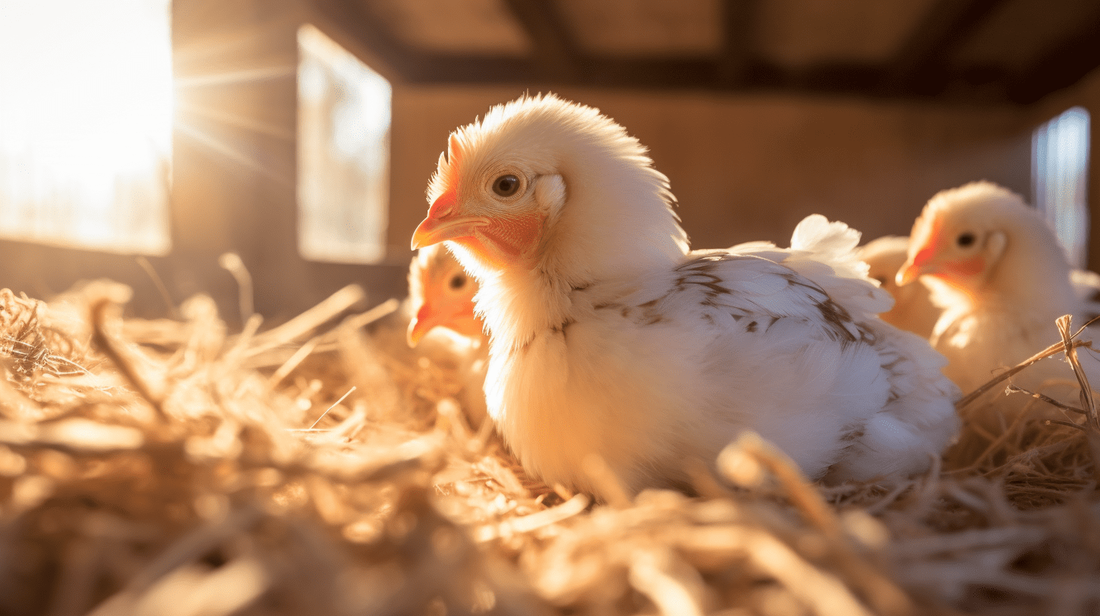|
When it comes to keeping chickens warm and comfortable in cold weather, insulation is key. A properly insulated coop will help regulate temperatures and prevent drafts. However, certain types of insulation can be unsafe for chickens if ingested. It's important to choose non-toxic materials and install insulation properly to prevent health hazards. This article provides tips on how to insulate your coop safely. Use Non-Toxic Insulation MaterialsSome types of insulation contain materials that can be harmful to chickens if ingested. Fiberglass, for example, contains tiny glass shards that can damage the digestive tract. Vermiculite may contain trace amounts of asbestos. Polystyrene beads and polyurethane foam can also be problematic if chickens peck at them. When selecting insulation, look for materials labeled as non-toxic. Good options include:
Avoid any insulation advertised as pest-resistant, as it likely contains toxic additives. Do your research to select the safest materials. Check out How to Choose the Right Insulation for Your Chicken Coop for help selecting the best insulation type for your climate and budget. Cover the InsulationEven non-toxic insulation should not be left exposed. Chickens will naturally peck and scratch at anything within reach. Cover insulation completely to prevent ingestion. Interior walls and ceilings can be covered with wood panels, plywood, or drywall. Check out The Complete Guide to Chicken Coop Insulation for step-by-step instructions. For added protection, staple chicken wire over the panels. You can also bury insulation under a dirt floor or wood shavings. Just be sure to include a vapor barrier between the insulation and ground. Learn more about vapor barriers in How to Prevent Condensation in Your Insulated Chicken Coop. Ventilate the CoopProper ventilation is crucial even in an insulated coop. Moisture and ammonia from droppings can build up quickly. Vents near the roof let fresh air circulate, preventing mold or illness. Install vents on opposite walls to create cross ventilation. And make sure vents can be adjusted or closed during extremely cold weather. Get tips on balancing insulation and ventilation in The Impact of Insulation on Chicken Coop Humidity. Inspect FrequentlyCheck the condition of your insulation regularly. Small holes or gaps can form over time, giving access to chickens. Pay special attention around doors, windows, and corners. Repair any compromised areas right away. It's also important to replace insulation periodically, as it loses effectiveness over years. An annual inspection allows you to spot issues before they become major problems. Get a comprehensive checklist in How to Inspect and Maintain Your Insulated Chicken Coop. Additional Coop Insulation Tips
Alternative Insulation OptionsFor natural, sustainable insulation, consider these coop-friendly materials:
The Benefits of InsulationA well-insulated coop provides chickens with:
The Future of Coop InsulationAs sustainable building practices gain popularity, we may see more green insulation options tailored for backyard chickens. Some possibilities include:
By using common sense precautions, you can insulate your coop to create an energy efficient shelter that also keeps your flock safe from harm. Monitor insulation regularly and remove or replace any compromised materials before chickens can access them. With smart choices and proper installation, your birds will stay warm and healthy through winter.
0 Comments
Leave a Reply. |
AuthorJoe Simson founded The Chicken Renters to help urban chicken keepers properly care for their flocks. With over 15 years of chicken-raising experience and a current flock of 50 hens, Joe offers practical tips on coops, feeding, breeds, and more through his blog and consulting services. His goal is to spread his lifelong passion for chickens by making poultry care simple and enjoyable. ArchivesCategories |

 RSS Feed
RSS Feed
